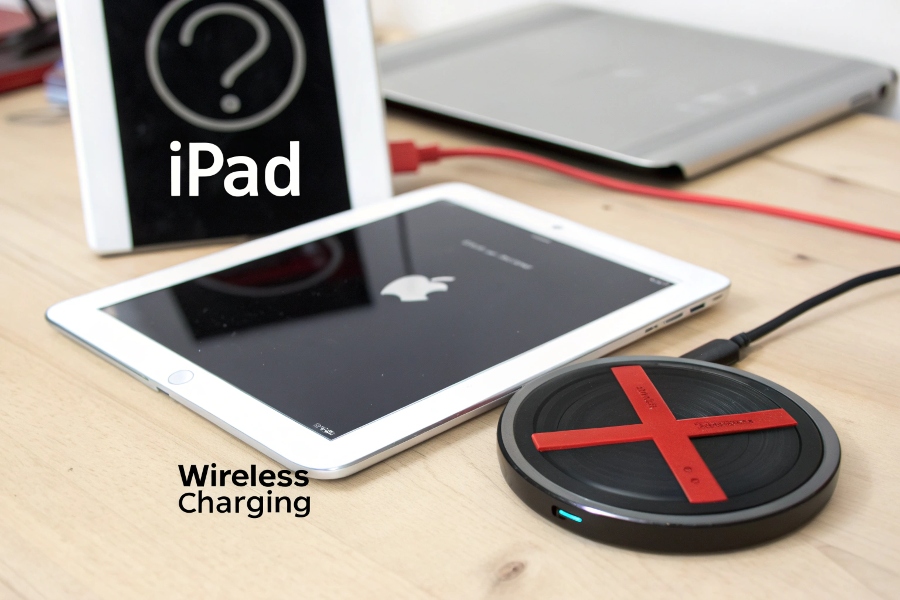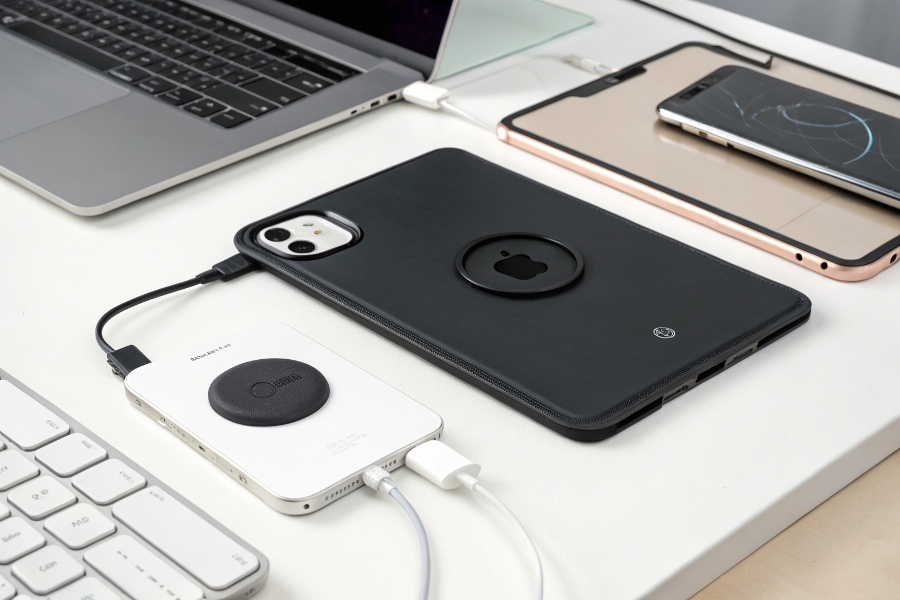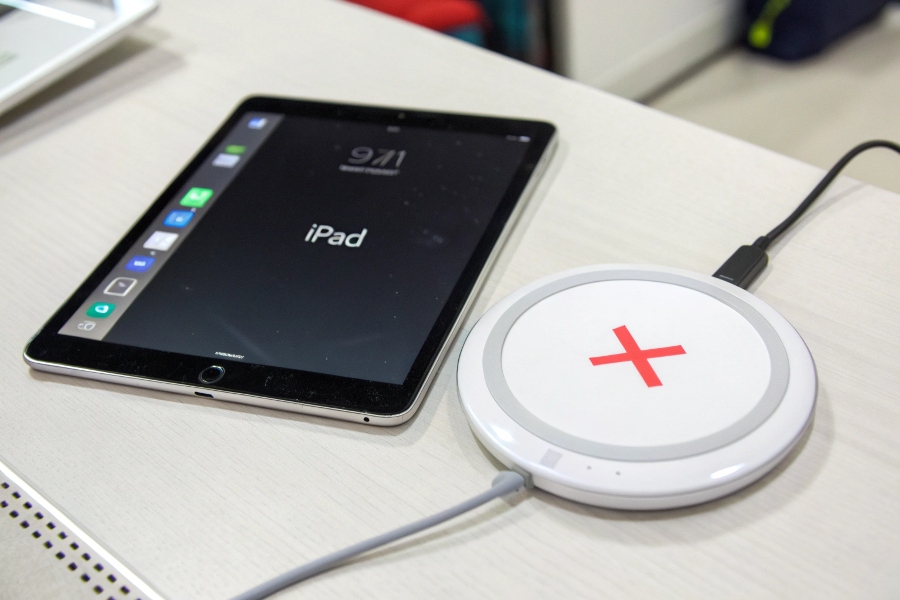Love the convenience of wirelessly charging your iPhone and wish you could do the same with your iPad? Frustrated by needing different charging methods for your Apple devices? Let’s clear up whether iPads share this handy feature.
Currently, no standard Apple iPad model comes with built-in wireless charging1 capabilities like iPhones do. The primary reasons involve their aluminum construction, larger size, and power requirements, making inductive charging technically challenging compared to smaller devices.

It’s a question I get asked surprisingly often. People see wireless charging on iPhones and naturally assume Apple’s popular tablets would follow suit. Especially for someone like David, managing multiple devices, having consistent charging methods would be ideal. But the reality, for now, is that your iPad still relies on its trusty Lightning or USB-C port for power. Let’s explore why this is the case.
Why don’t iPads have built-in wireless charging?
Puzzled why Apple hasn’t added such a convenient feature to its popular tablets? Seems like a missed opportunity when even AirPods cases have it, right? Let’s look at the technical and design hurdles involved.
The main obstacles are the iPad’s aluminum casing, which interferes with inductive charging, and the sheer size and power needs of its battery. Efficiently transferring enough power wirelessly to charge a large iPad battery presents significant engineering challenges compared to smaller phones.

Let’s break these challenges down further. Wireless charging, primarily using the Qi standard2 or MagSafe, relies on electromagnetic induction. A coil in the charger creates a magnetic field, and a receiving coil in the device converts this field back into electricity.
Key Obstacles for iPad Wireless Charging:
- Material Interference: Most iPads have aluminum backs. Metal is conductive and interferes significantly with the magnetic fields needed for inductive charging, blocking or absorbing the energy transfer. iPhones use glass backs partly to facilitate wireless charging. While some newer iPad Pro models use magnets for accessory connection (like the Apple Pencil), this isn’t the same as having a system designed for efficient power transfer through the case.
- Size and Power Requirements: iPad batteries are much larger than iPhone batteries (often 2-3 times the capacity). Wirelessly transferring enough power to charge such a large battery efficiently and within a reasonable timeframe is difficult. Standard Qi (7.5W) or even MagSafe (15W) speeds would result in very slow charging times for an iPad. Developing a higher-power wireless system would generate more heat and require larger, potentially more expensive coils.
- Heat Dissipation: Charging larger batteries, especially at higher speeds, generates more heat. Dissipating this heat effectively through a large, thin device without dedicated cooling, especially if charging through a case, becomes a more significant thermal management challenge. Consistent overheating is detrimental to battery health – a key concern we always address at FUMEI.
- Cost and Design Complexity: Integrating a large, efficient, and safe wireless charging system would add cost and complexity to the iPad’s design and manufacturing process.
Here’s a quick summary of the hurdles:
| Obstacle | Primary Issue | Consequence for Wireless Charging |
|---|---|---|
| Aluminum Back | Blocks/Interferes with electromagnetic fields | Inefficient or impossible energy transfer |
| Battery Size | Requires significantly more power than phones | Very slow charging at current standards |
| Power Delivery | Needs higher wattage wireless system for speed | Increased heat generation, larger coils |
| Heat Management | Larger battery = more heat during charge | Potential for overheating, battery degradation |
| Cost/Complexity | Adds internal components and design challenges | Higher manufacturing and retail cost |
Given these factors, Apple has likely prioritized reliable, faster wired charging (via Lightning or USB-C) for its iPads up to this point.
Are there any ways to wirelessly charge an iPad?
Okay, so iPads don’t have it built-in. But is there any way to get that wireless convenience? Are you completely stuck with cables if you want to charge your iPad? Let’s investigate the workarounds.
Yes, while not native, you can enable a form of wireless charging using third-party adapters. These plug into the iPad’s port and provide a Qi receiver coil that rests against the back. Alternatively, some stands offer magnetic charging connections, though not true inductive charging.

So, while Apple doesn’t offer a direct solution, the accessory market has stepped in with a couple of options if you’re really keen on reducing cable plugging.
Exploring the Workarounds:
-
Wireless Charging Adapters (Receivers):
- These are thin pads containing a Qi receiver coil with a short cable that plugs into your iPad’s Lightning or USB-C port.
- You stick the receiver pad to the back of your iPad (often under a thin case) and then place the iPad on a standard Qi wireless charging pad.
- Pros: Enables Qi wireless charging on a device that doesn’t natively support it. Relatively inexpensive.
- Cons: Usually offers very slow charging speeds (often limited to 5W). Adds slight bulk. The cable connection point can be fragile. Compatibility with cases can be tricky. Requires careful alignment on the charging pad. It’s not an elegant, integrated solution.
-
Magnetic Charging Stands (Not True Wireless):
- Some stands, particularly for iPad Pro/Air models that support accessories like the Magic Keyboard, use the Smart Connector or magnetic alignment combined with a direct USB-C connection within the stand itself. Examples include the Magic Keyboard’s pass-through charging port or dedicated magnetic stands like the Logitech Base or Pitaka MagEZ stands.
- Pros: Offers a convenient "docking" experience. Often provides faster charging than Qi adapters by using a wired connection integrated into the stand. Secure magnetic hold.
- Cons: This isn’t inductive wireless charging. It’s essentially a very convenient wired connection via magnets or the Smart Connector. Requires specific, often more expensive stands. Not universally compatible across all iPad models or cases.
From our perspective at FUMEI, while these adapters exist, they often compromise on speed and reliability compared to direct wired charging, especially for a power-hungry device like an iPad. For now, a high-quality USB-C PD charger and cable remain the most efficient and dependable way to power your iPad, aligning with our focus on "reliable quality" and "worry-free charging."
Conclusion
No, iPads do not currently feature built-in wireless charging like iPhones. While workarounds like Qi receiver adapters exist, they often offer slow speeds and aren’t seamlessly integrated like native support would be.
